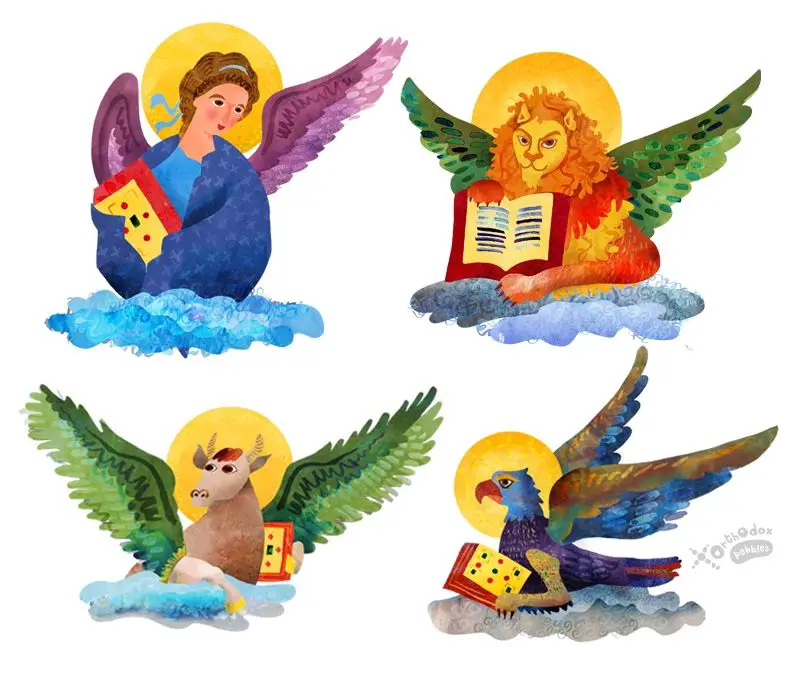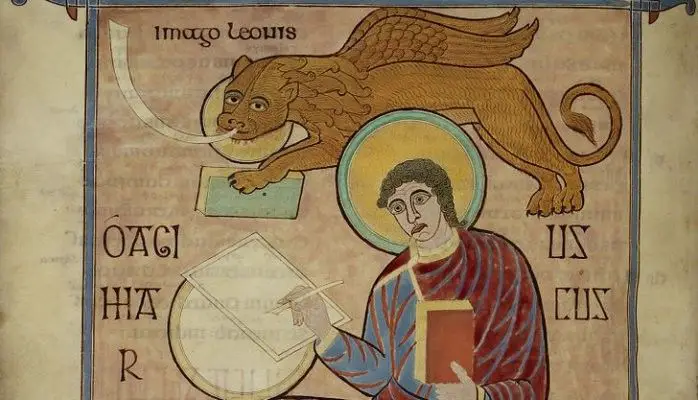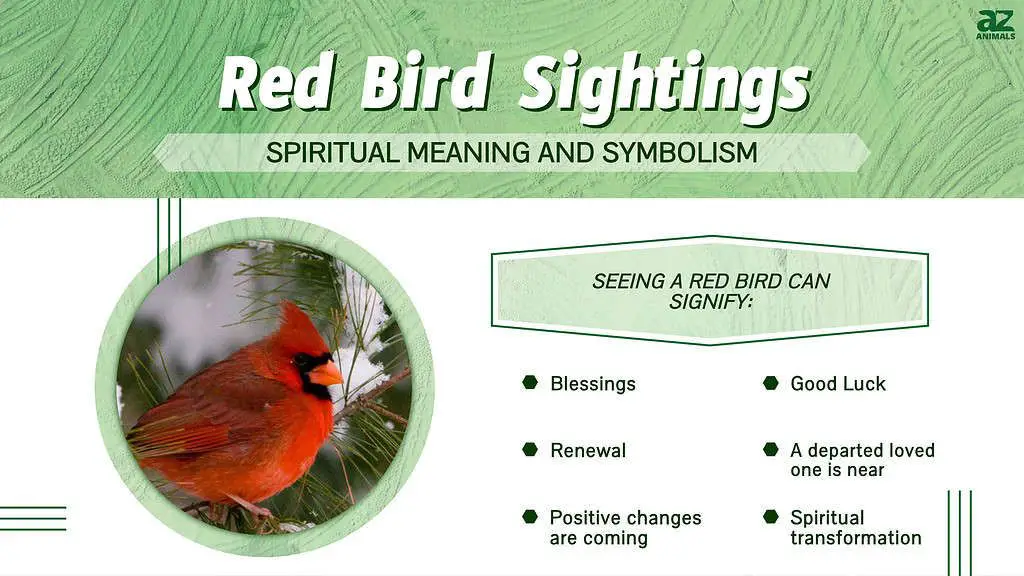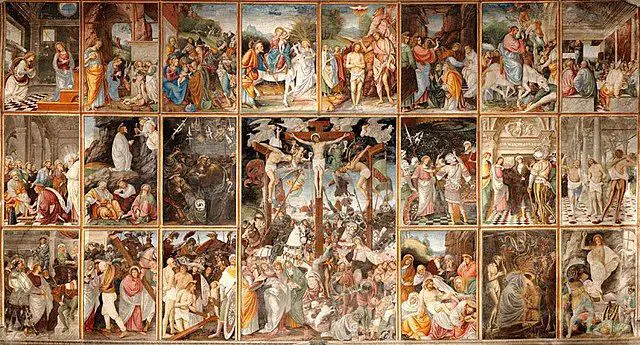Who Are The Four Calling Birds In The Bible?
The four calling birds are one of the symbolic gifts given in the popular Christmas song “The Twelve Days of Christmas.” In the context of the song, they represent the four gospels of the New Testament: Matthew, Mark, Luke and John.
The gospels contain the teachings of Jesus Christ and the story of his life, death, and resurrection. They form the cornerstone of the Christian faith, providing believers with insights into who Jesus was and the meaning behind his ministry. Given their theological significance, it makes sense that the four gospels would be highlighted in a Christmas song celebrating the birth of Jesus.
Each of the gospels offers a unique perspective on Jesus’s life and message. Together, they provide a more complete understanding of his identity and purpose. Though the four gospels share certain elements in common, they each have their own style, emphasis, and details that contribute to the broader biblical narrative. The calling birds in the Christmas song serve as a reminder of these important biblical books and their role in the Advent season celebrating Christ’s entrance into the world.
The Four Birds are Symbolic

In Christian tradition, the four birds represent the four evangelists – Matthew, Mark, Luke and John, who are said to have authored the four canonical gospels that appear in the New Testament of the Bible. Each of the four evangelists is symbolically associated with one of the four birds based on the attributes of those birds.
The eagle is associated with John because it can fly close to the sun and represents John’s spiritual and theological vision in his gospel. The ox or calf is associated with Luke because it symbolizes Christ’s sacrifice and Luke’s focus on Jesus’s atoning death. The lion is associated with Mark due to its boldness and strength, representing Mark’s focus on Christ’s resurrection and declarations of his divinity. Finally, the man is associated with Matthew since his gospel begins with Jesus’s human genealogy and emphasizes Christ’s incarnation and ministry on earth. [1]
Together, these four birds represent the four gospels and their differing but complementary perspectives on the life and teachings of Jesus Christ.
Gospel of Matthew

The Gospel of Matthew is the first book of the New Testament and one of the three synoptic gospels. It was traditionally written by Matthew the Apostle, one of the twelve disciples, between AD 80-90 (source).
A key theme in Matthew is how Jesus is the Messiah that was promised to the Jewish people in the Old Testament. It emphasizes how Jesus fulfills Old Testament prophecies. Matthew traces Jesus’s ancestry back to Abraham and aims to portray Jesus as the Savior not just of the Jews but of all people (source).
Matthew contains many of Jesus’s teachings and miracles, including the Sermon on the Mount and the commissioning of the apostles. It ends with the death and resurrection of Jesus. A summary of key events includes Jesus’s baptism, his confrontations with the Pharisees, the confession of Peter, parables and teachings, transfiguration, triumphal entry into Jerusalem, last supper, betrayal by Judas, trial, crucifixion, and resurrection.
Gospel of Mark

The Gospel of Mark is the second of the four canonical gospels and is attributed to Mark the Evangelist. According to early tradition, Mark acted as an interpreter for Peter and wrote down Peter’s testimony and preaching about Jesus (Papias apud Eusebius, Ecclesiastical History 3.39.15).
Mark’s gospel is characterized by an emphasis on the deeds of Jesus, focusing mainly on his miracles, healings, and acts of power. The author presents Jesus as the Son of God who has come to inaugurate the kingdom of God and calls for decision in the face of the coming judgment (Summary of Mark). Some of the major themes in Mark include discipleship, the Messianic secret, and the suffering Messiah.
Mark’s gospel provides a rapid-fire account of Jesus’ ministry, beginning with his baptism by John and temptation in the desert to the cleansing of the temple, debates with religious authorities, calling of the disciples, and various miracles interspersed with teachings. The midpoint of the gospel focuses on Peter’s confession of Jesus as Messiah, after which Jesus begins predicting his death and resurrection. The gospel culminates in Jesus’ triumphal entry into Jerusalem, last supper with his disciples, arrest, trial, crucifixion, and resurrection (SparkNotes Summary).
The Gospel of Luke

The Gospel of Luke was written around 60-61 A.D. by Luke, a Gentile Christian physician and companion of the apostle Paul (Wikipedia). Luke’s gospel focuses on the life, teachings, death, and resurrection of Jesus Christ. Some of the key themes in Luke’s gospel include:
- Jesus’s concern and compassion for the poor and outcast
- The importance of prayer and the Holy Spirit
- Women play a more prominent role
- Strong emphasis on Jesus’s death and resurrection
In summary, Luke provides a detailed account of Jesus’s birth, baptism, ministry, the last supper, arrest, crucifixion, and resurrection. He portrays Jesus as the Savior for all people, emphasizing his compassion and forgiveness. Some key events covered include the parables of the Good Samaritan and Prodigal Son, Jesus’s appearance on the road to Emmaus, and the ascension into heaven (SparkNotes). Overall, Luke presents Jesus as the divine-human Savior who shows mercy to all.
Gospel of John
The Gospel of John was likely written between A.D. 85-95 and is attributed to John the Apostle, one of the Twelve Disciples of Jesus (Summary of John). The authorship has been debated but most scholars support John the Apostle as the author. The Gospel provides an account of Jesus’s ministry with a focus on His deity.

Some of the key themes in John are: Jesus as the Son of God, belief in Christ, the Holy Spirit, eternal life, and Jesus as the source of life and light. The gospel contains many metaphors and rich symbolism. It includes famous stories not contained in the other gospels like the Wedding at Cana, the Samaritan Woman at the Well, and the Raising of Lazarus.
The book begins by establishing Jesus as the Word who took on flesh. The gospel then covers Jesus’s ministry, miracles, discourses, the Last Supper, betrayal, trial, crucifixion, and resurrection. John 20 details Christ’s appearances after His resurrection. The gospel concludes by stating its purpose – that readers would believe Jesus is the Messiah. (SparkNotes: Bible: The New Testament – The Gospel According to John)
Origins of the Four Birds

The four calling birds in the popular Christmas carol “The Twelve Days of Christmas” have their origins in the traditional English song and lyric “The Twelve Days of Christmas.” According to the Library of Congress blog, the earliest known version of the carol dates back to 1780 in England, where the fourth gift was “four colly birds.” The term “colly” referred to black as in coal.
It’s believed that the four birds were meant to represent four calling birds from the New Testament gospels, though the exact symbolic meaning is unclear. Some possibilities are the four Gospel writers Matthew, Mark, Luke and John or the four horsemen of the apocalypse depicted in Revelation 6:1-8. The most popular theory is that the four birds represent the four evangelists.
The lyrics were standardized in the early 20th century and published in Frederic Austin’s 1909 book “The Twelve Days of Christmas.” Austin changed the archaic “colly birds” to “calling birds,” referring to birds with distinctive vocalizations.
Significance Today
In modern times, the four calling birds are often interpreted more symbolically, representing important virtues or ideas. Many see the calling birds as embodying the four cardinal virtues – prudence, justice, fortitude, and temperance (Blog.nature.org, 2021). These four virtues provide guidance on living a moral, purposeful life. The birds can remind us of the wisdom found in temperance, fortitude, prudence and justice.

Others interpret the four birds as calling us to embody four Christian ideals – Faith, Hope, Charity and Good Works (Uniquebirdhouseboutique.com, 2013). The birds’ call encourages us to live out these values in a Christ-like manner. Especially during the Christmas season, the four calling birds prompt reflection on how our faith, hope, charity and good works are aligned.
In this way, the four calling birds continue to speak to us today. Their varied melodies inspire us to reflect on timeless virtues and live purposefully. Though originating in scripture, their significance resonates for modern listeners through the birds’ universal language – the call to wisdom, morality and meaning.
In Other Cultures
The four calling birds have significance in cultures and traditions outside of Christianity as well. In some pagan and Wiccan traditions, birds are seen as messengers between the divine and the mundane. Specific birds may represent certain gods or have symbolic meaning. For example, the raven is associated with the Celtic god Bran, and the owl represents the Roman goddess Minerva.
In Native American cultures, birds often appear in myths and legends, where they take on sacred roles or represent spirits. Eagle feathers play an important role in rituals and ceremonies for many tribes. Some interpret the four calling birds as representing the four sacred directions – north, east, south, and west.
The number four itself has significance across cultures. It represents wholeness and completion in numerology. In Feng Shui, it’s considered a very auspicious number. And in some Eastern religions like Hinduism, it symbolizes finding balance and harmony between the four aims of life – virtue, wealth, desire, and liberation.
So while the four calling birds in the Twelve Days of Christmas refer to the four Christian gospels, they could also represent more universal concepts like divinity, the four directions, wholeness, and balance in other spiritual traditions.
Conclusion

In conclusion, the four birds mentioned in the Gospels represent the authors of those books – Matthew, Mark, Luke and John. These birds symbolize the spreading of the gospel message across the world, just as birds can fly far distances. Though the exact species of the birds is unknown, imagery of birds was common in biblical times and remains significant today. The birds remind us of the diverse perspectives contained in the four Gospels, which together provide a more complete picture of Jesus’ life and ministry.
For readers today, the four birds carry a message of unity and community. As the early apostles worked together to share the good news, so must we strive to live in harmony and uplift one another. Their missionary zeal can inspire us to also spread the light of Christ through our words and actions. By reflecting on the symbolism of the four birds, we are connected to the origins of the Christian faith.



